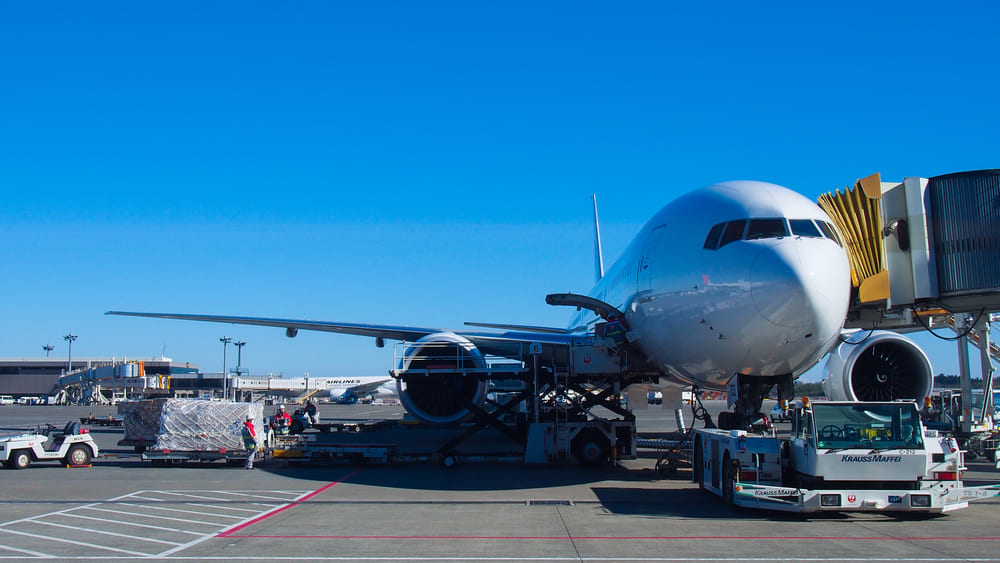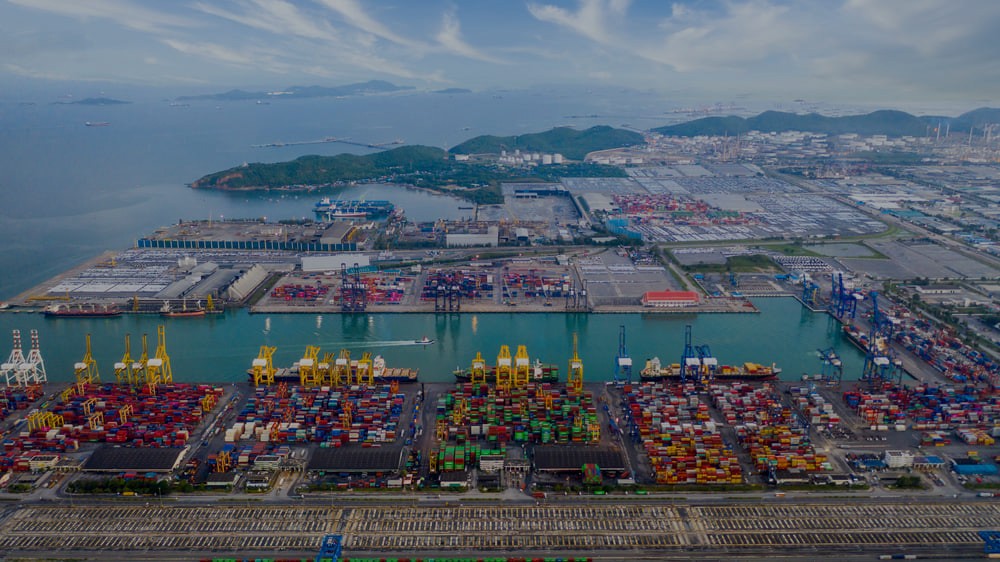You’ve probably experienced frustrating shipping delays and dramatically increased shipping costs in the last year, especially when shipping parts from the Asia-Pacific region. In fact, compared to this time last year, shipping prices are five to six times higher.
So, why are these shipping delays happening? What’s behind the drastically increased shipping costs? And, how can you make sure you get your parts as soon as possible? Let’s explore the current state of air and ocean freight, unravel supply chain issues in the manufacturing industry, and learn more about how Fast Radius can help you get your parts.
Unpacking global supply chain issues
On a macro level, air and ocean freight are experiencing massive delays and skyrocketing prices. Not only is it peak shipping season, but many companies are suffering from supply chain problems due to the residual effects of the pandemic and new COVID-19 restrictions. Natural disasters like typhoons, floods, and wildfires have also affected the freight market, further slowing down supply chains and reducing capacity.
Companies are also facing growing consumer demand for foreign-made imports, a shortage of labor, lack of empty containers, congested ports and terminals, and lagging inventory levels. Supply chains have slowed and prices have increased as a result.
What’s going on in ocean freight?
Between labor shortages, congestion at key maritime ports, and a lack of space on vessels and containers, ocean freight faces massive delays and elevated rates. Currently, 25% additional fleet capacity is required to move the same amount of cargo, resulting in longer delays as container ships spend more time waiting in bays like the Port of LA and the Port of Yantian. Port congestion is also rising across China after the port in Ningbo-Zhoushan closed when a worker caught COVID-19.
In recent months, many countries have cut off land access for sailors due to the spread of the Delta variant of the coronavirus. As a result, the ocean freight industry is experiencing labor shortages similar to those at the height of lockdowns in 2020. Captains have been unable to rotate crews and around 100,000 sailors have been stranded at sea. Despite this, there’s still a constant, high demand for ocean freight from the Asia-Pacific region to the United States.
Along with crew shortages, the ocean freight sector is facing a shipping container shortage. After being shipped from China, many containers never return because China doesn’t have the same demand for goods from the US that the US has for China’s products, meaning return trips are not profitable for shippers. Consequently, many Asian manufacturers don’t have containers to send to the US, and getting goods out of Asia has become challenging and expensive. Ocean freight services are unable to keep up with the growing consumer demand for foreign-made imports, so goods are sitting at factories and docks waiting for containers.
Ocean freight cost has also skyrocketed. In the last year, the average cost of transporting a shipping container has increased by almost 195%. Asia-US West Coast freight rates have reached $18,346/FEU, which is over six times higher than last year’s rates. Similarly, Europe-South America East Coast rates have increased nearly fourfold and reached $3,311/FEU.
What’s going on in air freight?
In a typical year, air cargo is 10 to 20 times more expensive than ocean freight. However, due to COVID-19-related supply chain issues and the rising cost of ocean shipping, the traditional cost differential between ocean and air freight rates has narrowed. Air cargo prices are now only six to eight times higher than ocean freight, so many companies are turning to air freight delivery services. Consequently, air freight is just as congested as ocean freight. Ground handlers at JFK, LAX, and ORD have reported backlogs of two to five days for breaking down import freight, meaning that export cargo can only be tendered two days or less before departure.

Not only are air freight services restricting or embargoing US export freight at their most congested terminals, but many are canceling international flights because new regulations require that crews coming back from overseas enter a 14-day quarantine. When combined with a lack of new capacity, these cancellations are worsening the space shortage and other air freight carrier issues. If flights continue to get canceled and sea freight continues to have high prices and extensive delays, air freight congestion will only increase.
Air freight capacity is down year over year, and retail inventory to sales ratios are near record lows. Yet, air cargo demand has already recovered to pre-pandemic levels — traffic in the first five months of 2021 was 9% higher than 2019 levels for the same period — in part due to the reduced price differential between air and ocean freight. While shipping rates for air and ocean freight will likely decrease, many predict that the price difference will remain smaller than in the past, boosting air cargo for several years.
How can Fast Radius help?
Unfortunately, these elevated prices, shipping delays, and global supply chain issues aren’t going to go away anytime soon. However, there are some effective strategies you can employ to improve shipping times and reduce costs.
Communicate your need-by dates during the sales process. For a shipment via ocean, book at least four to six weeks before your cargo ready date (CRD). Book at least two weeks before CRD if shipping air freight. Fast Radius can decide which shipping method is most cost-effective for you. If necessary, we can arrange the shipment of a portion of your order via small parcel air freight while using a slower, more cost-effective shipping method for the rest. The best shipping method also depends on your shipment’s weight.
- For shipments less than 150 lbs., small parcel air is still the fastest delivery method.
- For those between 150 and 1,000 lbs., consider shipping via air freight.
- For shipments over 1,000 lbs, or less than 1059 cft, we recommend shipping via ocean Less Than Container Load (LCL), or consulting with Fast Radius to provide a hybrid mode of transportation.
- For shipment over 1059 cft, we recommend breakdown the shipment into multiple LCLs or consulting with Fast Radius for hybrid mode of transportation.
Regardless of shipment size and weight, we recommend avoiding full container load (FCL). Instead, try multiple LCL shipments or sending shipments by ocean and air. To help relieve the FCL market, aim to decrease your CRD to departure window and keep shipments under 70 m3.
Trust an experienced partner
Between natural disasters and COVID-19, freight capacity is down, demand is soaring, and ocean and air freight services are facing lengthy supply chain delays and rising shipping costs. Even though many experts believe these challenges won’t be resolved until 2022 at the earliest, there are still many ways you can get your parts delivered as quickly and efficiently as possible.
At Fast Radius, we work closely with our network of vetted suppliers to find solutions to quickly and cost-effectively get you your parts when you need them. Our dedicated supply chain team is up-to-date on every supply chain shift, and we can help you plan for the unexpected. With our expertise, you can disaster-proof your supply chain, reduce production costs, lower operational risks, and stay agile with a global manufacturing network. Contact us today to learn more.
Visit our resource center to learn more about Fast Radius’ other offerings, including the Fast Radius Virtual Warehouse and industrial-grade 3D printing services.
